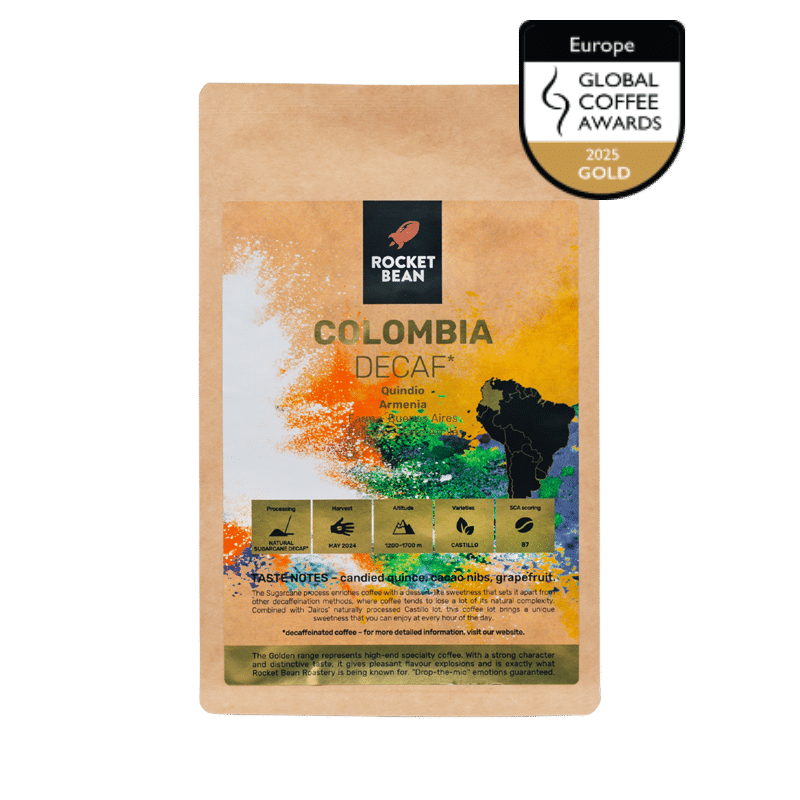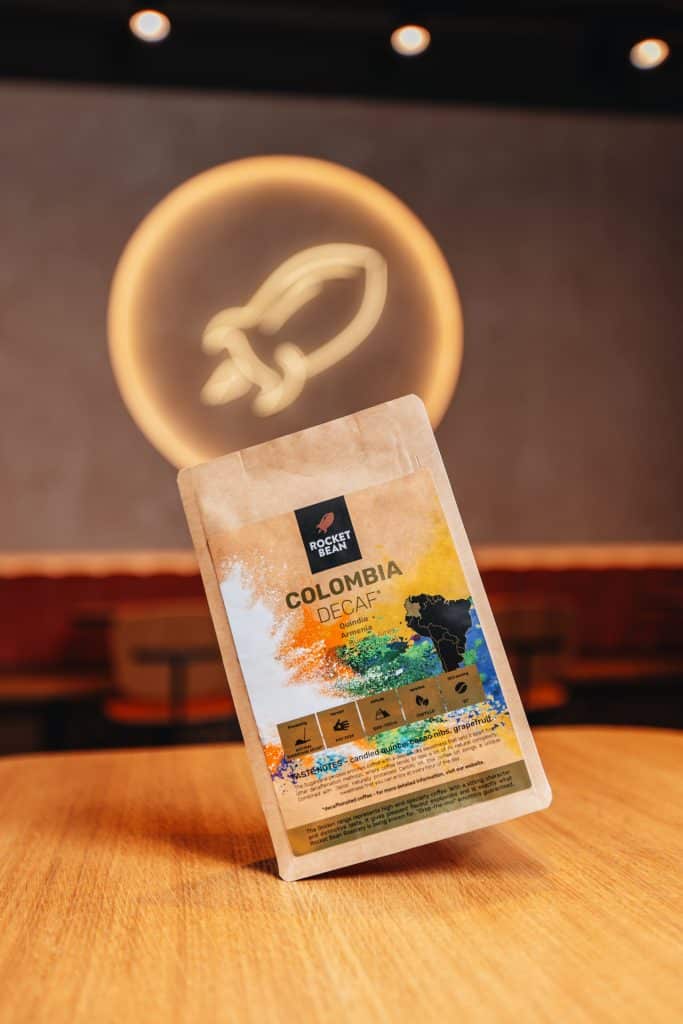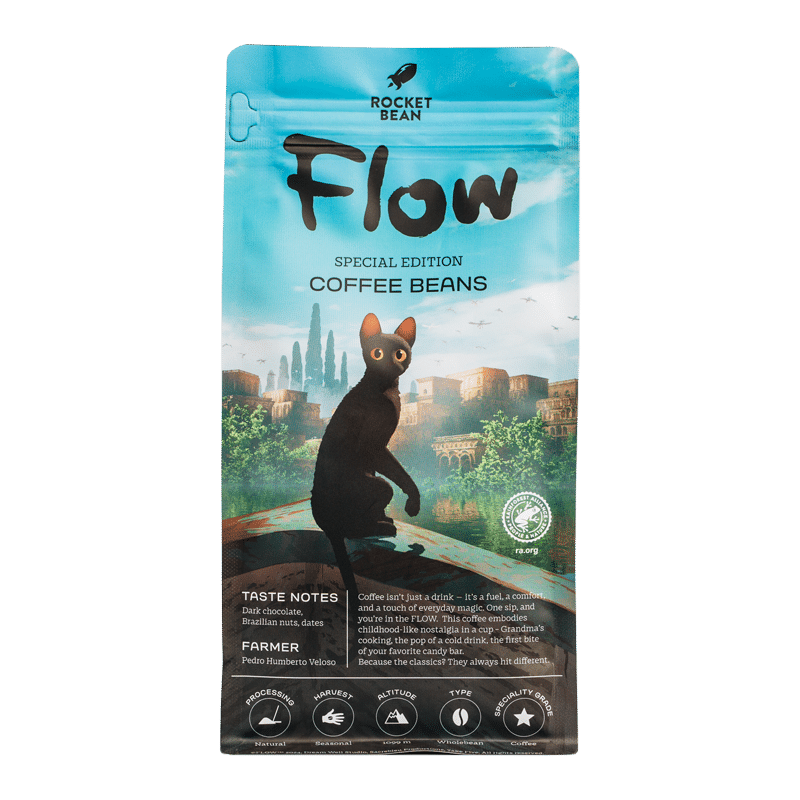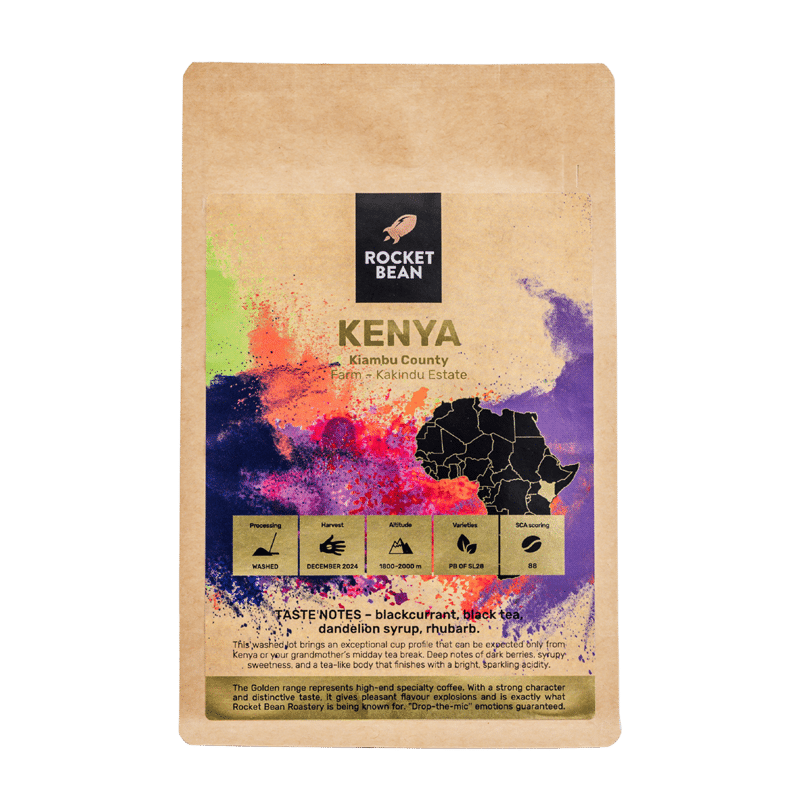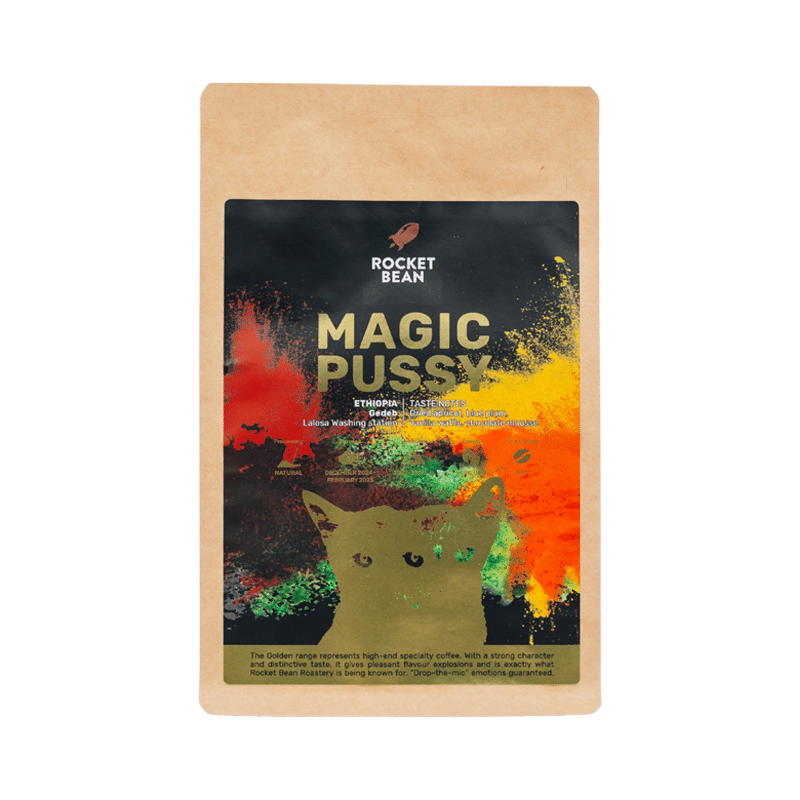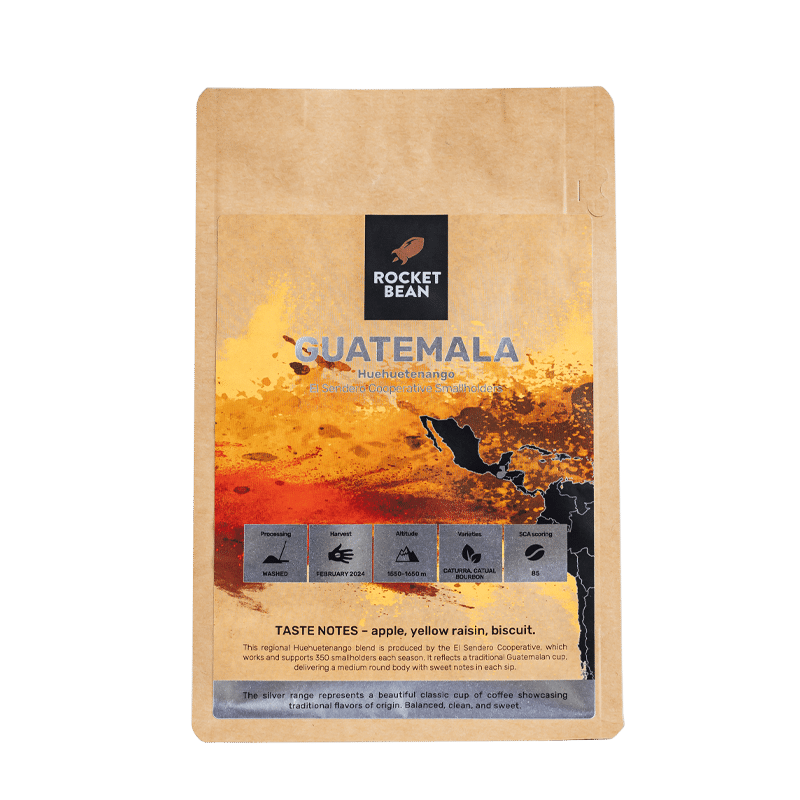Colombia | Sugarcane Decaf, Natural
Gold Medal at the Global Coffee Awards 2025
- Country: Colombia
- Region: Quindío, Armenia
- Producers: Jairo Arcila
- Taste and Arome: Candied quince, cacao nibs, grapefruit
19,00 €
Processing
Natural sugarcane decaf*
Harvest
May 2024
Altitude
1200–1700 m
Variety
Castillo
Scoring
87
The sugarcane process enriches coffee with a dessert-like sweetness, unlike other decaffeination methods that often strip it of complexity. Combined with Jairo’s naturally processed Castillo lot, this coffee lot offers a unique sweetness to enjoy at every hour.
Region
Quindío, in Colombia’s west-central region, is a UNESCO World Heritage site known for its lush green mountains, scenic landscapes, and thriving coffee industry. Quindío is part of the Coffee Axis, also known as the Coffee Triangle, which produces a significant portion of Colombian coffee each year.
The climate in the region is ideal for coffee cultivation, with average temperatures ranging from 18°C to 24°C year-round and consistent rainfall. The volcanic soil of Quindío provides excellent drainage and aeration, enhancing the flavour profile of the coffee. The altitude, ranging from 1,400 to 1,800 meters above sea level, also contributes to the unique characteristics of Quindío’s coffee, which is highly prized globally.
Historically known for commercial coffee, Quindío has only relatively recently shifted towards specialty coffee. This change is driven by young farmers who see the potential for a sustainable livelihood in high-quality coffee production. In the past, low prices for commercial grades drove many young people away from coffee farming and to seek opportunities in the larger cities. However, today’s growing specialty coffee market offers better opportunities, encouraging the next generation to stay on the farms and improve coffee quality.
Most of the farms in this region are family-owned farms, typically 2 to 5 hectares in size, and produce traditional Colombian varieties as well as exotic ones like Gesha and Pink Bourbon. This focus on quality has led coffee from Quindío to regularly place at or near the top of Cup of Excellence competitions. Also, farmers often compete locally to see who has produced the best coffee lots. Helping foster a vibrant local culture dedicated to quality and growth.
Farmer
Jairo Arcila is a third-generation coffee grower from Quindio, Colombia. His first job was with the country’s second-largest exporter, where he worked as mill manager for over 40 years until his retirement in 2019. In 1987, Jairo bought his first coffee farm, Finca La Esmeralda, where Jairo planted his first Caturra lot. He was fortunate to earn a living by producing coffee on his farm and working full-time. Using his savings, Jairo gradually purchased five additional farms: Villarazo, Mazatlán, Santa Mónica, Maracay, and Buenos Aires. During the harvest season, within these six farms, Jairo provides numerous jobs to locals, which has a significant economic impact on their community. As a farmer and producer, Jairo has learnednot only from his experience but also from his two sons. With their help, Jairo has improved coffee picking, sorting, and processing at his farms.
His sons have also guided and encouraged him in the cultivating exotic varieties such as Pink Bourbon, Java, Papayo, and Gesha across all his farms. This intergenerational collaboration has resulted in outstanding coffees with remarkable flavour profiles enjoyed around the world.
Castillo
Improving and mutating Caturra’s hybrid variety Variedad Colombia, Colombian agronomists developed a variety resistant to leaf rust, CBD (Coffee Berry Disease), and other diseases, while still producing a high yield crop. And so, in 2005, FNC introduced Colombian farmers with Castillo. A project called Colombia sin Roya (Colombia without Rust), led by the FNC, aimed to recover and renew the production of high-quality coffee in Colombia.
Nowadays, Castillo is the most commonly grown coffee plant in Colombia, thanks to its plant benefits, taste profiles, and subsidized seed pricing for farmers.
Sugarcane decaffeination process
The Colombian sugarcane decaffeination method is our favorite for many reasons, blissful taste notes and extra sweetness being just two of them. The main ingredient of this method – ethyl acetate (E.A.) is an organic compound naturally found in fruit juices, cereals, and sugarcane.
This process begins with the fermentation of molasses derived from sugarcane to create ethanol. Ethanol is an alcohol that is mixed with acetic acid (the main component of vinegar) to generate the E.A., which is then used in the decaffeination process.
Before the decaffeination process, cherries are carefully hand-picked at the Buenos Aires farm, so that only the ripest coffee cherries are used in this lot. Then they are delivered to a processing station where cherries are hand-sorted to remove any possible defects. Afterwards, they are sun-dried on raised beds under temperature-controlled conditions until the ideal moisture content is reached. Then they go through the decaffeination process, which goes by these steps:
- Green coffee beans are steamed for about 30 minutes before the decaffeination to unlock their pores, allowing caffeine extraction.
- Afterwards, coffee is placed in a solution of water and ethyl acetate (E.A.), a naturally occurring compound and solvent derived through the fermentation of sugarcane.
- Green coffee is submerged in the solvent, which naturally bonds to the salts of chlorogenic acids within the coffee, allowing the extraction of caffeine.
- Once the coffee is saturated, the tank is drained, and a fresh solution is added. This process continues for approximately 8 hours.
- After the last remaining caffeine is gone, the coffee is removed from the solution and prepped for another steaming.
- The final, low pressure steaming removes the remaining traces of E.A. Decaffeinated coffee is then dried, physically polished to ensure cleanliness, packed and ready for export.
